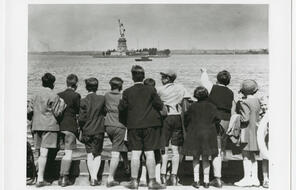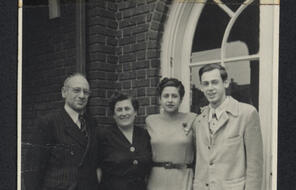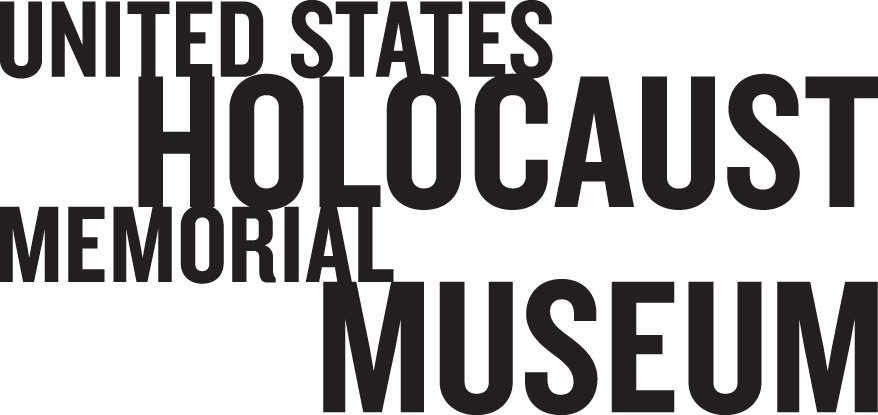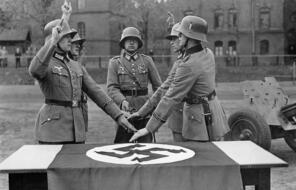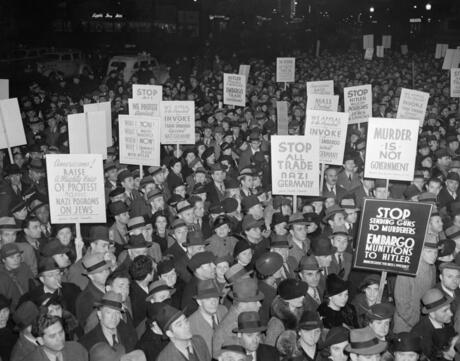
Americans and the Holocaust: The Refugee Crisis
At a Glance
Language
English — USSubject
- History
Grade
9–12Duration
One week- Genocide
- The Holocaust
- Human & Civil Rights
Overview
About This Unit
Interweaving Facing History’s innovative approach to historical inquiry with groundbreaking new sources from the United States Holocaust Memorial Museum’s special exhibition Americans and the Holocaust, this unit shifts students’ study of World War II and Nazism to the other side of the Atlantic.
The unit deeply explores the motives, pressures, and fears that shaped Americans’ responses to Nazism and the humanitarian refugee crisis it provoked during the 1930s and 1940s. By examining primary sources that range from public opinion polls to personal narratives to radio plays, students will explore why widespread American sympathy for the plight of Jewish refugees never translated into widespread support for prioritizing their rescue. The unit also highlights the stories of individual Americans who did take tremendous risks to rescue Jews, as well as the questions this history raises for taking action in the context of contemporary refugee crises.
Preparing to Teach
A Note to Teachers
Before you teach this lesson, please review the following guidance to tailor this lesson to your students’ contexts and needs.
Lesson Plans
Special Thanks
A living memorial to the Holocaust, the United States Holocaust Memorial Museum inspires citizens and leaders worldwide to confront hatred, prevent genocide, and promote human dignity. Located among our national monuments to freedom on the National Mall, the Museum provides a powerful lesson in the fragility of freedom, the myth of progress, and the need for vigilance in preserving democratic values. The Museum promotes the responsible teaching of the Holocaust through a variety of resources and programs to help the nation's educators increase their knowledge of Holocaust history and implement sound teaching strategies. Education outreach programs provide teachers with tools to deliver quality Holocaust education, incorporating accurate history, appropriate pedagogy, classroom strategies, and teaching resources. Visit www.ushmm.org for more information.
Sponsored By

Teach Facing History
Not in the United States?
Find resources for Canada and the United Kingdom
Learn more about our other International Partners
Unlimited Access to Learning. More Added Every Month.
Facing History & Ourselves is designed for educators who want to help students explore identity, think critically, grow emotionally, act ethically, and participate in civic life. It’s hard work, so we’ve developed some go-to professional learning opportunities to help you along the way.
Exploring ELA Text Selection with Julia Torres
On-Demand

Working for Justice, Equity and Civic Agency in Our Schools: A Conversation with Clint Smith
On-Demand

Centering Student Voices to Build Community and Agency
On-Demand



